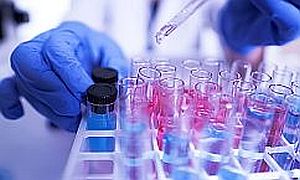Sputum testing detected the RNA of the virus that causes COVID-19 at significantly higher rates than oropharyngeal swab testing, the current gold standard, found a systematic review and meta-analysis from Brigham and Women’s Hospital.
Early and accurate detection is critical for preventing the spread of COVID-19 and providing appropriate care for patients. Nasopharyngeal (NP) swabs, which require inserting a long shaft into the nasal cavity to collect a sample from the back of the nose and throat, are currently the gold standard for collecting a specimen for diagnosis. But the procedure is technically challenging, often uncomfortable for patients and requires personal protective equipment that may be in short supply. Other approaches to collecting specimens — including from an oropharyngeal swab and sputum — have been tested in small studies, but there is uncertainty about which method is best for detecting the virus.
In a study, investigators from Brigham and Women’s Hospital conducted a systematic review and meta-analysis, analysing data from more than 3,000 specimens to compare the three approaches. The team found that sputum testing detected the RNA of the virus that causes COVID-19 at significantly higher rates while oropharyngeal swab testing had lower rates. Regardless of the collection method, the earlier samples were collected after symptoms began, the higher the detection rate.
“The accurate diagnosis of COVID-19 has implications for health care, return-to-work, infection control and public health,” said corresponding author Dr Jonathan Li, a faculty member in the division of infectious diseases at the Brigham. “Our gold standard in and out of the hospital is the nasopharyngeal swab, but there’s a lot of confusion about which sampling modality is best and most sensitive. Our study shows that sputum testing resulted in significantly higher rates of SARS-CoV-2 detection and supports the use of this type of testing as a valuable method for the diagnosis and monitoring of COVID-19 patients.”
Li and his colleagues scoured the literature – both preprints and published papers – from studies that assessed at least two respiratory sampling sites using an NP swab, oropharyngeal swab or sputum. From more than 1,000 studies, they identified 11 that met their criteria. These studies included results from a total of 3,442 respiratory tract specimens.
The team examined how often each collection method produced a positive result. For NP swabs, the rate was 54%; for oropharyngeal swabs, 43%; for sputum, 71%. The rate of viral detection was significantly higher in sputum than either oropharyngeal swabs or NP swabs. Detection rates were highest within one week of symptom onset for all three tests.
“When it comes to testing, the earlier the better, as diagnostic accuracy is improved earlier after symptom onset, regardless of the sampling site,” said Li. “Unlike antibody testing, it’s very rare to have a false positive qPCR test when diagnosing COVID-19 early in the course of the disease using these methods.”
Nasopharyngeal swabs are collected through the nasal cavity; oropharyngeal swabs are collected by inserting a shaft through the mouth; and sputum samples are generally collected by having a patient cough deeply to produce and expel phlegm. Not all patients are able to produce a sputum sample; for such patients, a nasopharyngeal swab may be the best collection method.
The meta-analysis included only studies conducted on hospitalized individuals – additional study will be needed of patients who are asymptomatic or have mild symptoms. The current study did not assess alternative testing methods, such as saliva or anterior nasal swabs (taken from the front of the nose). Li and his colleagues at the Brigham are currently working on a project, funded by the Massachusetts Consortium on Pathogen Readiness, to collect and process multiple kinds of samples from patients with COVID-19 to create a resource for researchers.
“The holy grail will be to find a test that is readily acceptable by patients, easy to collect, and highly sensitive,” said Li.
This study was funded in part by the National Institutes of Health (U01AI106701) and the Harvard University for AIDS Research (NIAID 5P30AI060354). Li reports personal fees from Abbvie and from Jan Biotech, outside the submitted work. A co-author reports personal fees from Harvard TH Chan School of Public Health, during the conduct of the study, as well as grants from NIH/NIAID, outside the submitted work.
Abstract
Background: The accurate detection of SARS-CoV-2 through respiratory sampling is critical for the prevention of further transmission and the timely initiation of treatment for COVID-19. There is a diverse range of SARSCoV-2 detection rates in reported studies, with uncertainty as to the optimal sampling strategy for COVID-19 diagnosis and monitoring.
Methods: We performed a systematic review and meta-analysis of studies comparing respiratory sampling strategies for the detection of SARS-CoV-2 RNA. The inclusion criteria were studies that assessed at least two respiratory sampling sites (oropharyngeal swab, nasopharyngeal swab, and sputum) in participants with COVID-19. The percentage positive tests were compared between sampling modalities by constructing a Ztest assuming independence and using the standard errors obtained from the random effects meta-analysis.
Findings: From 1039 total studies, we identified 11 studies that met our inclusion criteria, with SARS-CoV-2 testing results from a total of 3442 respiratory tract specimens. Compared to nasopharyngeal swab sampling, sputum testing resulted in significantly higher rates of SARS-CoV-2 RNA detection while oropharyngeal swab testing had lower rates of viral RNA detection. Earlier sampling after symptom onset was associated with improved detection rates, but the differences in SARS-CoV-2 RNA detection by sampling method was consistent regardless of the duration of symptoms.
Interpretation: The results support sputum sampling as a valuable method of COVID-19 diagnosis and monitoring, and highlight the importance of early testing after symptom onset to increase the rates of COVID-19 diagnosis.
Authors
Abbas Mohammadia, Elmira Esmaeilzadeha, Yijia Lia, Ronald J Boschb, Jonathan Z Lia
[link url="https://www.brighamandwomens.org/about-bwh/newsroom/press-releases-detail?id=3615"]Brigham and Women’s Hospital material[/link]
[link url="https://www.thelancet.com/journals/ebiom/article/PIIS2352-3964(20)30278-4/fulltext"]EBioMedicine abstract[/link]

